Top 4 Most Beautiful Historical Sites in Uganda
After years of civil war and upheaval, the Republic of Uganda is now experiencing a period of peace. Since then, the country has recovered from numerous ... read more...setbacks and is today a vibrant nation capable of displaying its rich history and natural beauty. Now, Toplist introduces to you some of the most beautiful historical sites in Uganda.
-
The Kasubi Tombs in Kampala, Uganda, are the resting places of four kabakas (Kings of Buganda) and other Baganda royal family members. As a result, the site serves as a spiritual and political center for the Ganda people, as well as a showcase for traditional building. In December 2001, it was designated as a UNESCO World Heritage Site, with the description "one of the most extraordinary constructions employing exclusively botanical materials in the entire region of Sub-Saharan Africa.". Today, it is considered one of the most beautiful historical sites in Uganda.
This World Heritage Site is located on the Kasubi hill in Kampala, about 5 kilometers (3.1 miles) northwest of the city center, and covers approximately 26 hectares (64 acres). The majority of the land on the property is open agricultural land that is farmed using conventional methods. Muteesa I, the 35th Kabaka of Buganda, built a royal palace in 1882 to replace a palace built by his father, Ssuuna II, in 1820. When he died in 1884, the new mansion was turned into a royal burial place. The site is one of 31 royal graves that have been discovered around the Buganda kingdom since its founding in the 13th century. The body of the deceased king was traditionally buried in one location, with a separate shrine for the deceased king's jawbone, which was thought to hold his soul.
In March 2010, a fire nearly completely destroyed some important structures there, the cause of which is still being investigated. As a result, in July 2010 The Kasubi Tombs were included in the list of World Heritage Sites in Danger.Location: Kampala, Uganda
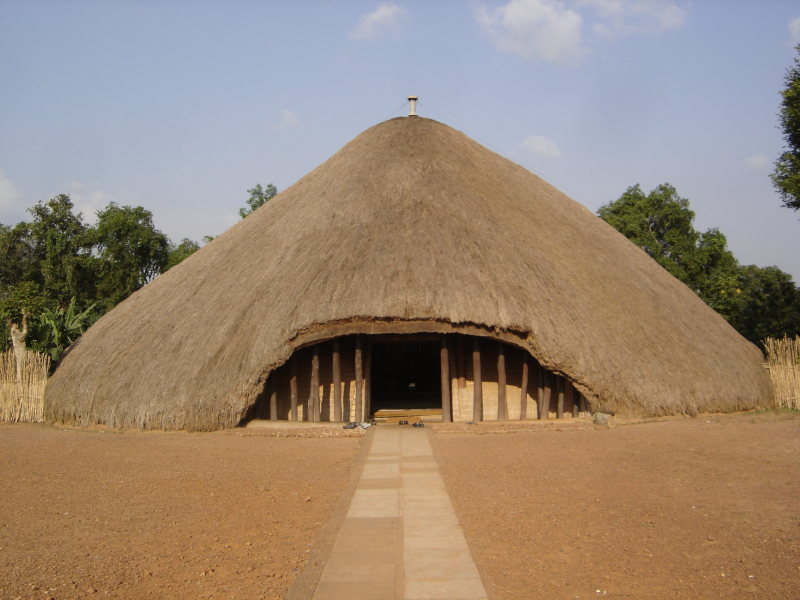
Photo; wikipedia 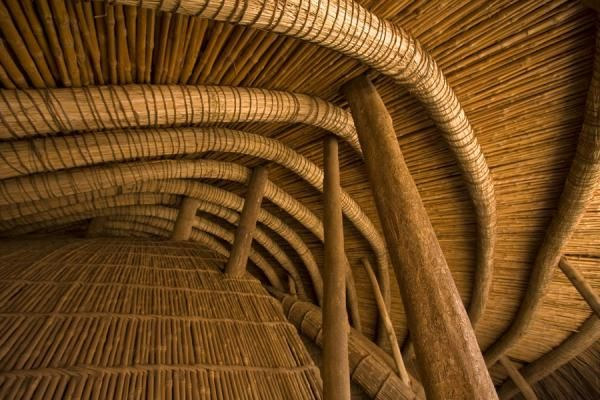
Photo: pinterest -
The Namugongo Martyrs Shrine in Namugongo is a Roman Catholic minor basilica dedicated to Ugandan Martyrs. This is in the Central Ugandan town of Namugongo, Kira Municipality, Wakiso District. Namugongo is around 14 kilometers (9 miles) northeast of the central business district of Kampala, Uganda's capital and largest city.
The exterior of the gorgeous temple is made up of 22 copper pillars that are over 100 feet long. The memorial was created to honor 32 young men who served as pages to Buganda's King Mwanga II. The guys were burned to death on June 3rd, 1886, for refusing to forsake Christianity.
Location: Namugongo, Wakiso District, Uganda
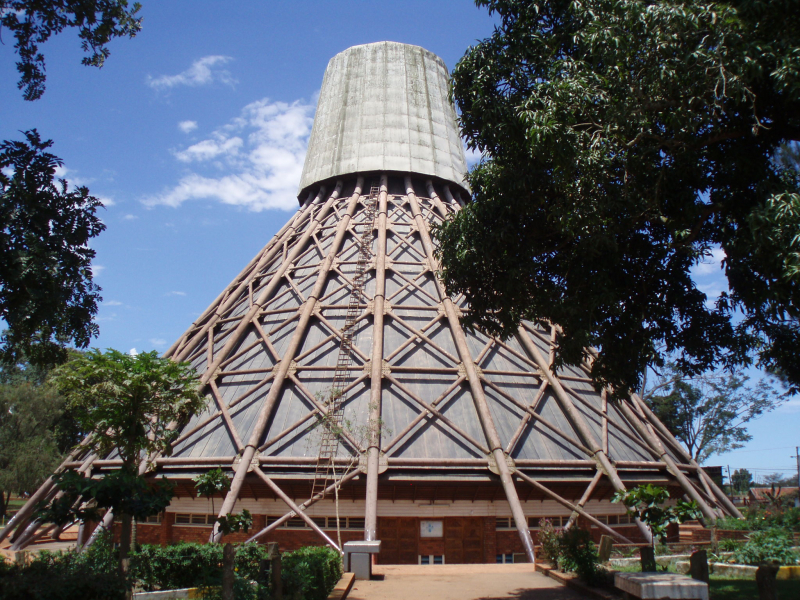
Photo: wikipedia 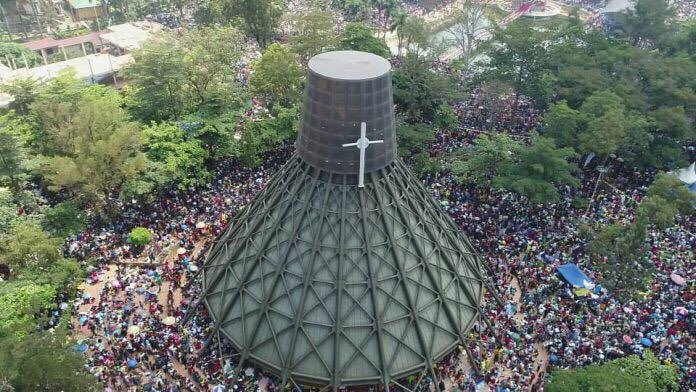
Photo: afaris-uganda -
Amabere ga Nyina Mwiru is a cultural site in Fort Portal, Uganda, with a long and illustrious history. While on your way to Semuliki national park for a birding safari or to see the hot springs, Kibale national park for chimp trekking, or Queen Elizabeth national park for a wildlife safari and boat excursion, you can stop by. The creation of stalagmites resulted in the formation of this rock. It is tucked away amid a grove of trees and a series of lovely waterfalls.
The origins of the cave Amabere Ga Nyina Mwiru, or Breast of Nyina Miwiru, are veiled in myth and tradition. After his daughter Nyinamiwiru refused to marry the man he chose for her, King Bukuku of the Toro and Bunyoro kingdoms is claimed to have had her breasts cut off. According to another tale, she hacked off her own breasts. Many visitors to the cave today can witness stalactites that look like breasts and drip water, depositing white calcite. The water is breast milk pouring from Nyina Miwiru's breasts, according to the local guide.
Location: town of Fort Portal, Kabarole District, Uganda.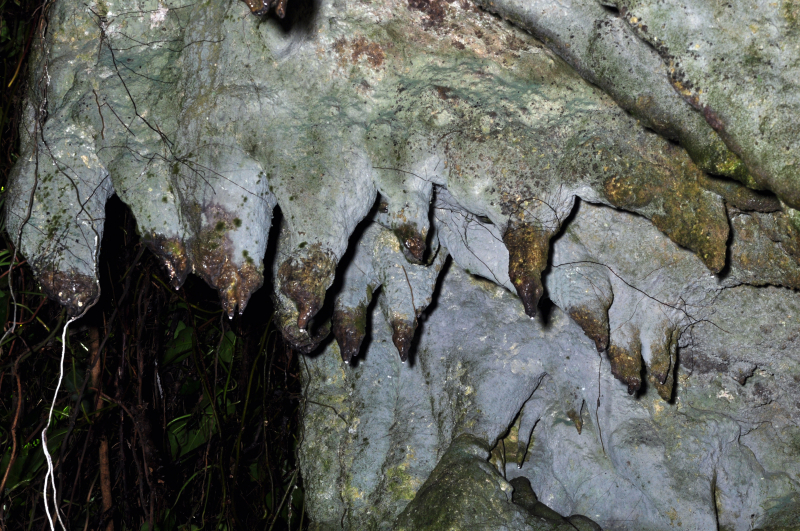
Photo: commons.wikimedia 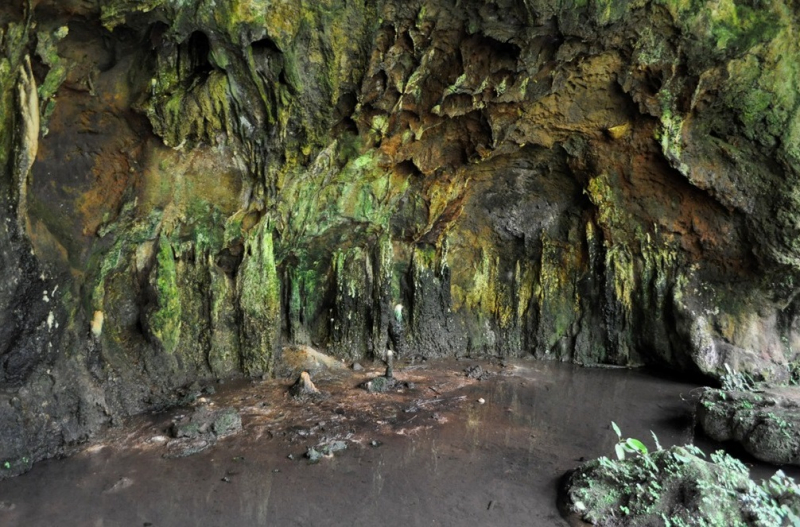
Photo: ugandasafaristours -
The Mother Temple of Africa, also known as the Kampala Bahá’í House of Worship, is located on Kikaaya Hill in Kawempe Division, in northern Kampala, Uganda's capital and largest city. The Bahá’í Temple in Kampala is the only Bahá’í' temple in Africa today. It was designed by Charles Mason Remey, an architect.
The temple's dome is made of fixed mosaic tiles from Italy, while the lower roof is made of Belgian tiles. Green, pastel blue, and amber-colored glass from Germany are used in the wall panels. Both the wood used to make the doors and benches, as well as the stone used to build the temple's walls, are native to Uganda. The House of Worship, large gardens, a guest house, and an administrative center are all part of the 50-acre (200,000 m2) site.
Because it has beautiful architecture and belongs to one of the most beautiful historical sites in Uganda, it has attracted hundreds of visitors from all around the world since its completion in 1961. Many photographers of all levels are drawn to the gorgeous grounds. Visitors are not permitted to photograph the interior, though. Visit the Bahá’í Temple in Uganda for a once-in-a-lifetime experience. Join the locals for church on Sunday mornings at 10:30 a.m. if you wish to learn more about their religious practices.Location: Bahá’í Temple, Kikaya Hill, Kampala, Uganda
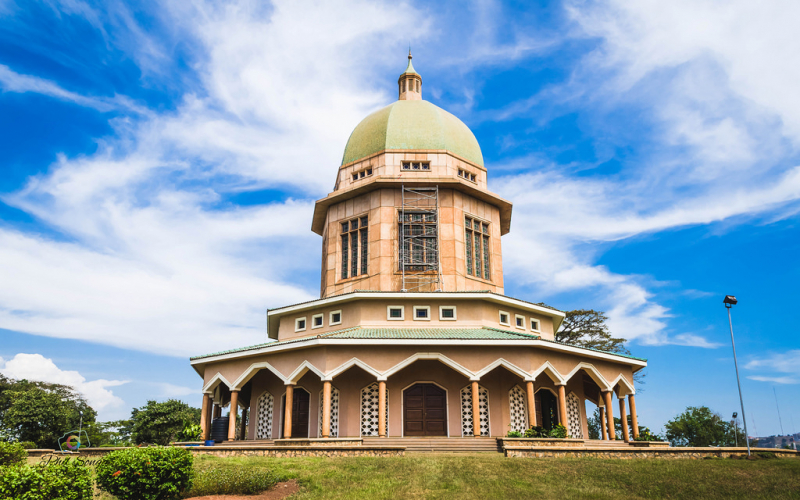
Photo: theculturetrip 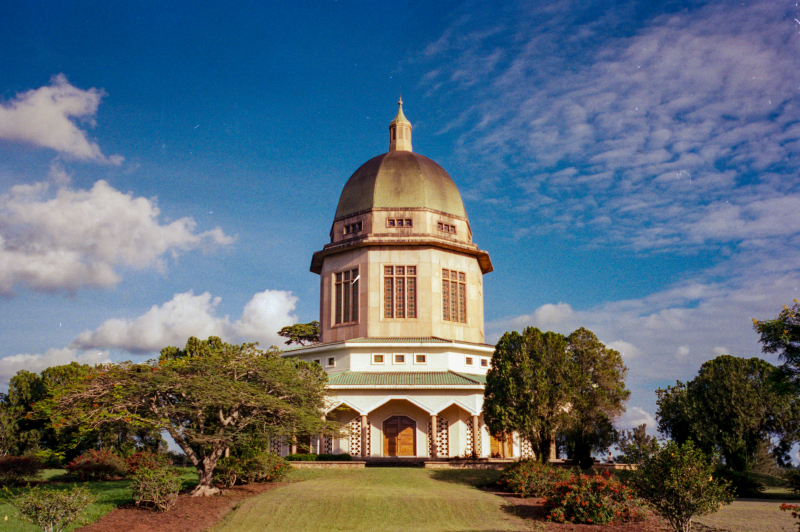
Photo: abahaiglossary

























